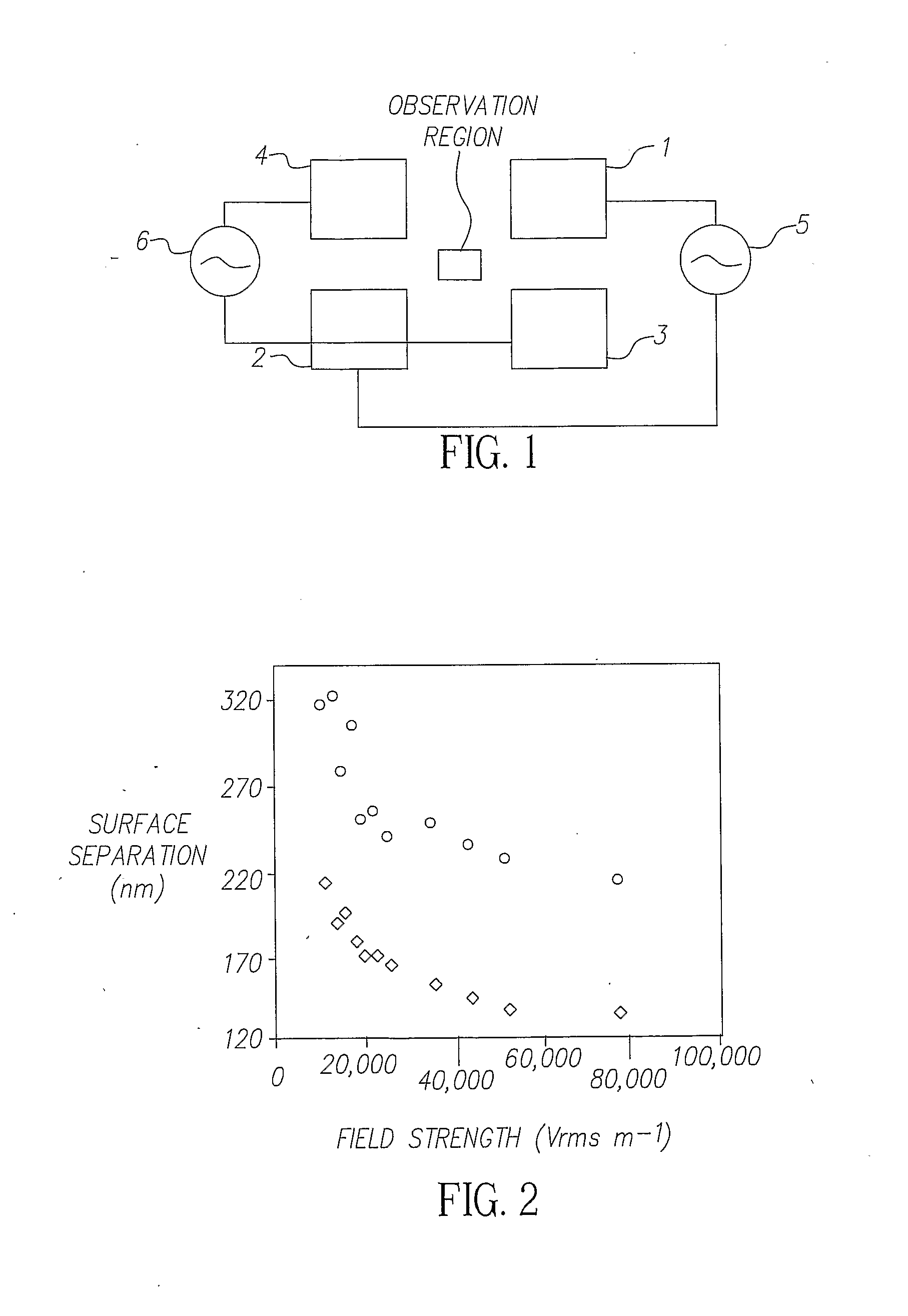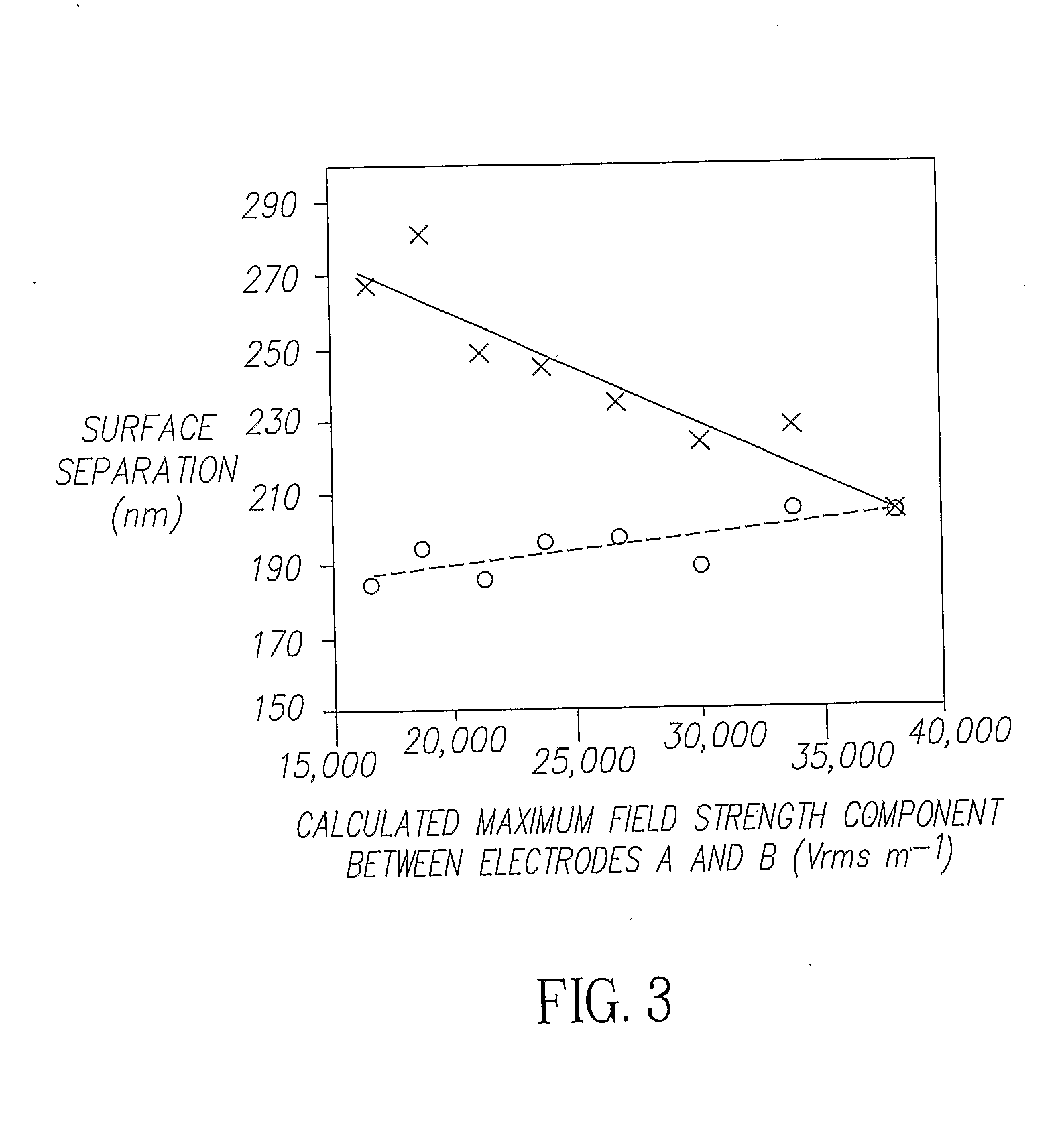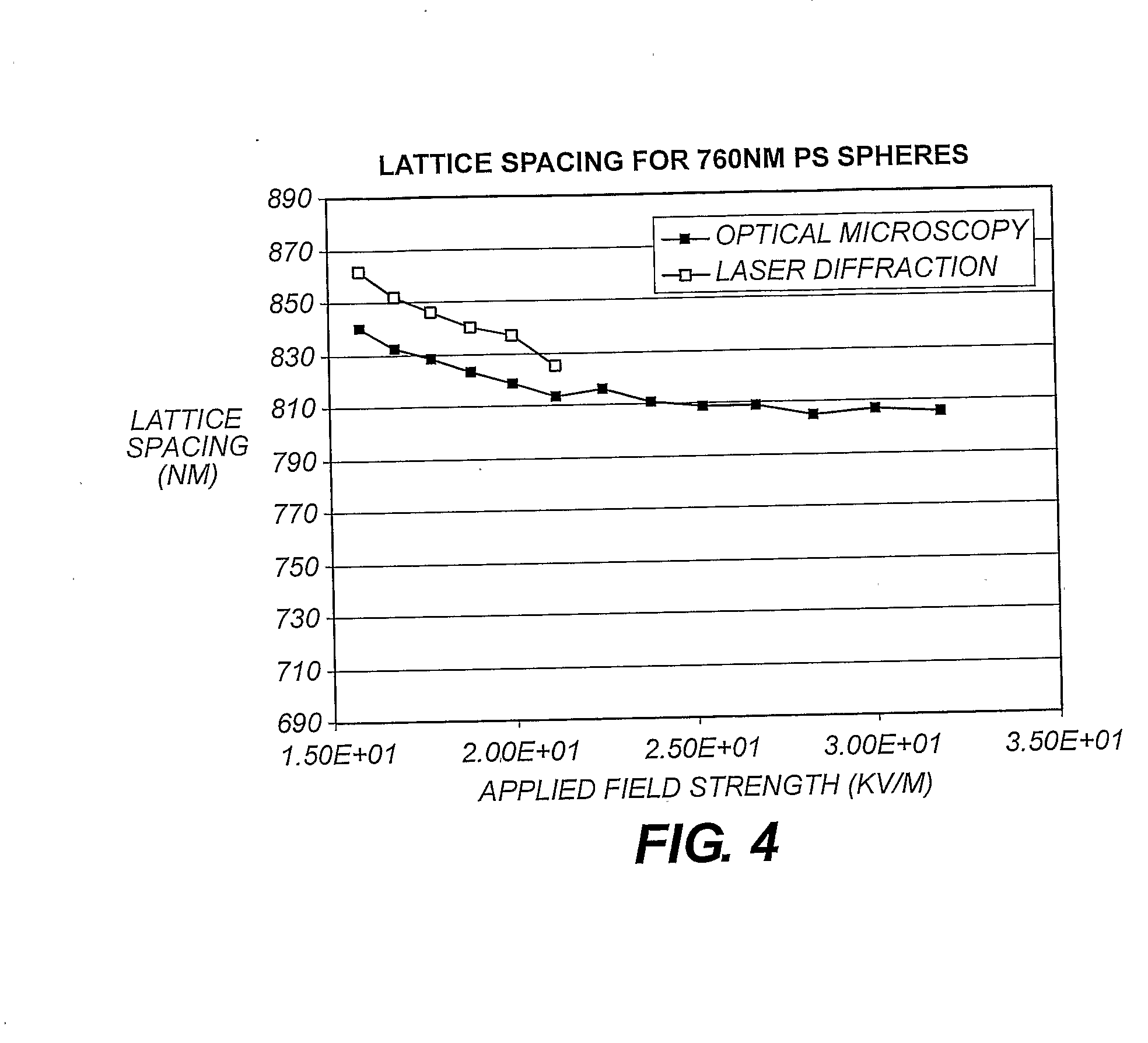Control of Lattice Spacing Within Crystals
a technology of lattice spacing and crystals, applied in the field of crystals, can solve the problems of limiting the wavelength range over which a device might operate, the inability and the inability to use electric fields to actively control the lattice spacing of colloidal crystals. , to achieve the effect of dynamic positioning of particles, accurate, and reversibl
- Summary
- Abstract
- Description
- Claims
- Application Information
AI Technical Summary
Benefits of technology
Problems solved by technology
Method used
Image
Examples
Embodiment Construction
[0018]FIG. 1 illustrates the layout of the electrodes used to demonstrate the method of the invention.
[0019]Four electrodes, 1, 2, 3 and 4, are arranged around an observation region. Electrodes 1 and 2 are connected to a signal amplifier 5. Electrodes 3 and 4 are connected to a signal amplifier 6. The four electrodes are co-planar. In the experiments conducted the distance between electrodes 1, 4 and 2, 3 are 159 μm. The distance between electrodes 1, 3 and 2, 4 are 142 μm. However, the gap can be adjusted as required. Smaller distances mean lower voltages to achieve the desired effect, i.e. a field strength of order 30000 Vm−1.
[0020]The electrodes consist of a 40 nm thick layer of platinum, sputter coated onto a glass microscope slide. Typically a 10 μL aliquot of a dilute suspension of anionic polystyrene latex particles was placed between the electrodes and covered with a microscope coverslip. The edge-to-edge electrical resistance of each electrode was less than 100Ω, resistance...
PUM
| Property | Measurement | Unit |
|---|---|---|
| frequency | aaaaa | aaaaa |
| frequency | aaaaa | aaaaa |
| frequency | aaaaa | aaaaa |
Abstract
Description
Claims
Application Information
 Login to View More
Login to View More - R&D
- Intellectual Property
- Life Sciences
- Materials
- Tech Scout
- Unparalleled Data Quality
- Higher Quality Content
- 60% Fewer Hallucinations
Browse by: Latest US Patents, China's latest patents, Technical Efficacy Thesaurus, Application Domain, Technology Topic, Popular Technical Reports.
© 2025 PatSnap. All rights reserved.Legal|Privacy policy|Modern Slavery Act Transparency Statement|Sitemap|About US| Contact US: help@patsnap.com



